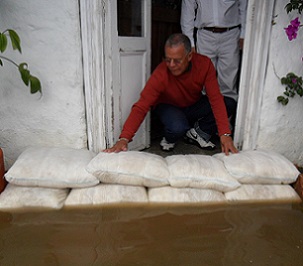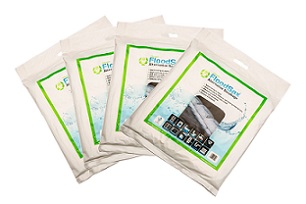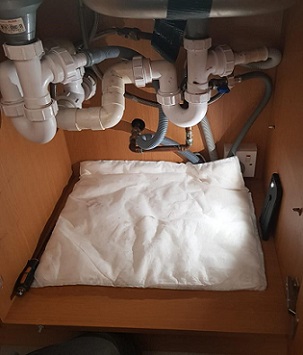 FloodSax alternative sandbags keep filthy floodwater out of homes and businesses
FloodSax alternative sandbags keep filthy floodwater out of homes and businesses
 FloodSax sandless sandbags are space-saving to store and quick and easy to deploy
FloodSax sandless sandbags are space-saving to store and quick and easy to deploy
 FloodSax are multi-purpose which means they can be used inside to soak up drips, leaks and floods in hard-to-reach places
FloodSax are multi-purpose which means they can be used inside to soak up drips, leaks and floods in hard-to-reach places
How Londoners can protect themselves from catastrophic flash flooding
AN urgent warning has gone out to thousands of Londoners who live in basement properties about the dangers of flash flooding.
Mayor Sadiq Khan has written to 45,000 basement properties deemed at risk with an information leaflet following the catastrophic London floods last July, warning them of the dangers and what to do if the worst happens.
But the advice does not highlight how Londoners can protect themselves with anti-flood devices even though it makes it clear it is their responsibility to do so.
Local councils have no responsibility at all to provide sandbags or any other flood mitigation products when flooding is forecast.
Many Londoners now have FloodSax (http://www.floodsax.co.uk/) alternative sandbags as they are space-saving to store and quick and easy to deploy. In their dry state they resemble large pillowcases which means they can also be used inside to soak up drips and internal floods caused by leaking pipes, radiators and boilers. The gelling polymer inside the FloodSax absorbs the water. To use them as ‘sandless’ sandbags, simply immerse them in water and they miraculously expand to become sandbags but without the sand.
For other anti-flood products go the product directory on the National Flood Forum's website called Blue Pages by clicking here.
Flash flooding is worse in summer and the warning comes almost a year after London was hit by two catastrophic floods in just five days on July 12 and July 17.
Parts of the capital were deluged with more than a month’s rainfall in just two hours which made many people homeless as their homes were so badly flooded with floodwater and even sewage backing up through the drains. The floods also shut 30 underground station and led to schools and hospitals being evacuated.
City Hall believes there will be even worse flooding in the years to come if no action is taken to cut carbon emissions and flooding could have a serious impact on a quarter of London’s railway stations, one in five schools, half the city’s hospitals and hundreds of thousands of homes and businesses.
The Mayor said: “I’m doing all I can to ensure that the people most at risk know what to do in the event of a flash flood. This leaflet is designed to help people prepare for flash floods, which we expect to happen more frequently in our city. Be prepared – it could help to save lives.’
Leaflets giving practical advice to people on how to prepare and deal with a flood will be distributed to basement properties.
The basics include signing up to weather alert emails from the Met Office, checking drains around the home are clear and ensuring people can turn off the water, gas and electricity.
They are also urged to prepare an emergency ‘flood kit’ in the event of an evacuation containing warm clothes, phone chargers, vital medications and important documents like proof of insurance.
A group including the London Fire Brigade, London councils, Transport for London, water companies and the Environment Agency are also working on ways to deal with extreme weather events in London.
To read the Mayor of London’s full flood advice click here